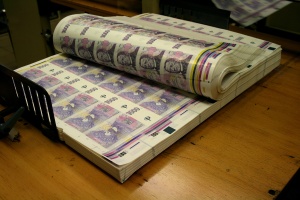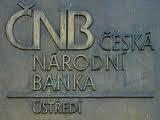Hat Trick Letter – říjen, 1.část

Hat Trick Letter vyšel zhruba před týdnem, tady najdete výňatky z první části. Výňatky z druhé budou následovat cca za týden.
Operace Twist
OPERATION TWIST HAS CAUSED SOME UNINTENDED CONSEQUENCES. DAMAGE HAS BEEN DONE TO PRIMARY BOND DEALERS. THEY ARE DUMPING BOTH USTBONDS AND CORPORATE BONDS. THEY ARE KNOWLEDGABLE VETERAN PLAYERS. THE BOND MARKET IS BADLY WOUNDED. BANK FAILURES COULD OCCUR VERY SOON
The Primary Dealers are supposed to be devoted USGovt finance soldiers, building inventory, aiding the system, acting as buffer. They have become massive sellers of USTreasurys and Corporate Bonds recently, the data through September 28th. A trend is stark clear. The dealers appear to be in trouble. Observe wholesale dumping of both USTreasurys and Corporate Bonds. They are either in deep distress themselves, or abandoning ship during Operation Twist, the opportunity presented. They are experienced with intimate knowledge of corporate finances. Bond yields are turning upward from their record rally in troubling developments. Implications for the bond market are dire, and reflect badly on US financial system health. Lee Adler of the Wall Street Examiner said, „About the Fed’s Primary Dealer network. If the Fed is the head, these guys are the spinal cord. Isolating on just their corporate bond holdings, the picture becomes even more troubling. If major corporations are supposedly doing so well and their balance sheets are in such great shape, why did the Primary Dealers not accumulate their fixed income securities throughout the equities bull market of 2009 and 2010? And especially why have they been frantically dumping their corporate holdings since June? Something is rotten here. These are signs of major systemic stress.“
Pohled ze Stratforu
Stratfor is a geopolitical think tank with a spotty record. The do well on economic matters, and poorly on military matters. However, they recognize the depth of the global financial crisis and its unfixable nature. The research outfit estimates that the bailout necessary to manage the fallout from a Greek removal from the Euro Monetary Union, and a debt default, would require EUR 2 trillion. My estimate is more like EUR 4 trillion minimum, when all PIIGS plus France are engulfed. The formal bailout mechanism, the European Financial Stability Facility, is in place, but it is woefully inadequate. Nobody seems willing to admit that it is grossly under-funded, like by a factor of five. Soon attention will come to the Italian Govt debt needs. Rome was under the spotlight, butGreece and the delayed funds for its bailout took over that focus. Italy would require close to EUR 1 trillion alone, but over three years perhaps. Stratfor estimates that upon a Greek rejection, EUR 400 billion would be quickly needed to cover the contagion and another EUR 300 billion needed for the banks. The IMF is not prepared to offer a huge slice of that bailout aid. It could provide at most EUR 150 billion. Even with enormous bond redemption and bank aid, Europe will stumble along while their great structural, financial, and organizational challenges remain. The plans discussed serve as mere patches and tourniquets for a couple of years, and no solution whatsoever. Neither the United States nor Europe are on the path to any solution, and not London either. No plans involve big bank liquidations.
Euro
THE EURO CENTRAL BANK DID NOT CUT INTEREST RATES. ALMOST THE ENTIRE EURO CURRENCY DECLINE, AN OVERSIZED 1000 BASIS POINTS, WAS PREDICATED UPON THE EXPECTED RATE CUT TO ACCOMMODATE A SLOWER ECONOMY. THEY ANNOUNCED EXTENSIONS TO BOND PURCHASES INSTEAD. THE EURO CURRENCY IS RISING, OVER HALF DONE ON ITS RECOVERY
An important reversal of focus, expectation, and direction has taken place in Europe. Put aside the sovereign debt mess that will not go away. It will not be fixed, despite all the effort and talk and deal making. They must prepare for a string of bank failures and a Greek default. Every solution executed or proposed or pending involves the same lunatic device of creating more debt or more money to solve a problem caused by too much credit creation and unchecked monetary creation. All concomitant austerity plans on budgets will worsen the deficits and debt picture. For 18 months the Euro had traded on the back of the European Central Bank monetary policy, on interest rate judgments and expectations. To be sure, the PIIGS sovereign debt situation has dominated the news. However, that disaster has played out in the member nation bond yields, like Greek yields shooting toward 100%, like the bigger southern periphery nations jumping over the critical 5% level. During all the maelstrom of the wrecked bonds, arguments over bank bailouts, haggling over funding the stability fund facility, and political foot dragging, the Euro had maintained above the 140 exchange rate for a long time. The impetus for the rise from 130 to 147 in the Euro currency from the beginning of year 2011 had been the clear move by Trichet of the Euro Central Bank to break ranks with the US Federal Reserve. Trichet hiked the official rate by 25 basis points several months ago, attempting to make distance from the USFed. He made defiant comments implying a reckless pattern at the USFed. He cited rising price inflation threats and the lack of desire to continue to stimulate on the monetary side. The rate hike was criticized widely for its direct impact on PIGS nations. Their mortgage rates and other related internal bank mechanisms caused damage to the southern banks. They were already teetering.
All changed at the end of August. The outgoing chief Trichet responded to the Western plunge in stock markets accompanied by vivid economic slowdowns. In recent weeks, the Euro Central Bank has indicated a greater emphasis on paying attention to growth issues, a policy direction change. The profound bank distress has grown into a contagion, as the big French banks came under the spotlight, also capturing his attention if not causing shock. Then suddenly Dexia had a near death experience, aided en route to the morgue. The EuroCB seems now trapped by two equally unsavory and undesirable policy directions. It had been giving all the signals of an official rate cut. But the European Central Bank did not cut rates last week, an event of extreme importance. Trichet cited intensified downside economic risks, words which matched the Bernanke language of extreme economic weakness. The clumsy Euro Central Bank instead decided to announce another round of bank loans and massive bond purchases. While the bond plan is more of the same expansion of money, much bank backstop activity has curiously been US$-based, as the big European banks have a boatload of US$ obligations to meet, actually raising USDollardemand. The ugly little fact in the last month has Wall Street banks filling the void with extended bailout-like loans in the inter-bank market to big Euro banks. The harsh reality is that whenGreece inevitably defaults, a string of bank failures will occur that hit Europe, London, and the US simultaneously. It will be very rapid. The great posturing is underway prior to the big event. Clear the smoke and dust, and the fact remains that the official EuroCB interest rate was not cut by 25 basis points. They did not even remove their hike from several months ago.
The Euro is in recovery from its tumble down the staircase in late summer. The currency began quickly to gain strength on the usual speculation that another round of fresh loans to deeply distressed banks by the European Central Bank would buoy the financial markets stuck in crisis mode. The Competing Currency War will not quit until its logical conclusion of comprehensive ruin of paper currencies. The Euro rises from fading faith in interest rate cuts, the key to leveraged bond speculation that has dominated the FOREX markets for two decades. The British Pound is falling from the expanded official bond purchase plan by the Bank of England, in unexpected uncharacteristic style. The Brazilian Real surged after price inflation rose more than forecast, raising belief that the central bank will bring an end to official interest rate cuts.
EuroCB officials left their benchmark rate at 1.5%, as expected after strong hints by Trichet made since September in reaction to widespread evidence of economic slowdown. The EuroCBannounced no change on rates, but big change to credit. The EuroZone price inflation is still at 3%, for which they have a clear single mandate. The outgoing ECB head announced a resumed covered bond purchase plan that reintroduces year-long loans for banks. They are badly threatened as the sovereign debt crisis has frozen money markets. Trichet will step down at the end of October, to be succeeded by Mario Draghi from Italy and of Goldman Sachs pedigree. The financial markets found relief, as they believe amplified support from stronger liquidity measures mean much more than the toothless stimulus from lower interest rates. Talk continues of the interruption to recovery, a 1984-like mantra. The reality is that the US and UK and Western Europe have been stuck in a powerful recession for three years, as near 0% interest rates since early 2009 have done nothing to accomplish the anticipated heretical Keynesian lift from phony stimulus. Insolvency has gripped the entire Western world, and no amount of liquidity flood can fix it. All austerity measures imposed on budgets will worsen the problem. It is like a deeply indebted person going on a hunger strike to improve his loan payback.
Situace v bankovncitví
THE MORGAN STANLEY CANARY IS SCREECHING. ITS CDSWAP FOR DEBT INSURANCE IS SOUNDING LOUDER THAN THE LARGEST WOUNDED ITALIAN BANKS. IT COMPARES BADLY TO FRENCH BANKS TOO. WHILE EUROPE RECEIVES NEWS COVERAGE, WALL STREET IS GIVEN A PASS. THE BANK HAS BECOME DEPENDENT UPON THE CREDIT MARKET AND NOT TO DEPOSITORS, A WARNING SIGNAL. THE BUCKET SHOP BAGHOLDER OF INTEREST RATE SWAPS IS DOOMED.JUST A MATTER OF TIME BEFORE IT IS PLOWED UNDER DEAD.
Morgan Stanley (MS) owns the world’s largest retail brokerage. Its corporate debt is being priced in the debt insurance market as less creditworthy than most American, British, and French banks, but as risky as Italy’s biggest banks, all of which are badly wounded. The Credit Default Swap cost for debt insurance against a default on Morgan Stanley debt for five years surged to 456 basis points, or $456k for every $10 million of debt insured, in the first week of October.That is very expensive, and quite a rise from 305 basis points on September 15th, according to London-based CMA. From the stable of wrecked Italian banks came Intesa Sanpaolo with a CDSwap at 405 basis points, and UniCredit at 424 bpts, higher than the French troubled banks. While the price of their CDS is the highest since March 2009, it is well below the peak reached in 2008. On October 10th of that fateful year, the annual price for 5-year protection rose to 1300 basis points, or 13%, triple the current cost. Rising CDSwap spreads are making investors and creditors nervous about Morgan Stanley, a small Wall Street firm deeply abused. It plays a key role, like with the added $9 trillion in derivatives tacked on in 1Q2011, most being Interest Rate Swaps. That started the USTBond rally to contradict the Standard & Poors debt downgrade of USGovt debt. The stock (symbol MS) has taken a beating this year, down from a peak 32 per share in February to a lowly 15 or 16, after a bounce off the 12 floor. It is a component in the S&P 500 Financials Index.
Moodys Analytics, an independent arm of Moodys Investors Service, issued a report that stated the Morgan Stanley CDSwap price implied a bank credit rating as having declined to Ba2 from Ba1 in the last month. The company is absurdly rated six grades higher at A2 by Moodys, a gift and fraud. This opens the door to shorting the stock on a death watch. By comparison, Bank of America and French Societe Generale have CDS trading at 403 basis points and 320 basis points respectively, which imply a higher rating of Ba1. Morgan Stanley was the biggest recipient of emergency loans from the Federal Reserve during the financial crisis and also benefited from capital provided by the USDept Treasury and Mitsubishi UFJ Financial Group, its largest shareholder. Another warning signal is the fast rise in trading volume for the MS debt insurance. Their CDSwap volume has risen to 257 contracts in early October, compared with 187 for Goldman Sachs Group, according to the Depository Trust & Clearing Corp data. That compares with a weekly average of 73 contracts in Morgan Stanley and 91 in Goldman Sachs in the six months that ended on August 26th, over triple for MS and double for GS. The credit market is in turmoil. Supply is scant. Many banks are on death watch, subject to shorting sharks. Few market participants are prepared to sell debt insurance protection to meet the demand for hedges, given the European Union is in shambles. So the CDS insurance cost rises.
The rise in Morgan Stanley CDSwap prices is linked to an expected decline in 3Q2011 trading revenue and to big exposure to French banks. The MStanley fixed income trading in Q3 was worse than 4Q2010, when they posted the lowest debt trading revenue since the 2008 crisis. The investment bank had $39 billion of exposure to French banks at the end of December, offset by sizeable hedges and collateral. The result is a claimed net $2 billion exposure to French bank firms. As of June 30th, Morgan Stanley also had $5 billion of funded exposure to Greece, Ireland, Italy,Portugal, and Spain. That was reduced to about $2 billion when offsetting hedges were accounted for. Do not believe the strength of the hedges, since the counter-party will probably fail with them in the domino effect. Curiously, the Morgan Stanley CDS spreads are wider than French bank CDS spreads. Implied is that MStanley has other significant problems that the insiders are aware of. Point the finger to Interest Rate Swaps. Some analysts suspect that MS has grown too dependent upon the debt markets, instead of depositors, in order to provide funding for its assets. This might be one cause of concern. MS is in a race to ward off death.
________________________________________
Na základě souhlasu Jima Willieho budu zde pravidelně publikovat výňatky z jeho Hat Trick Reportu, jehož jsem předplatitelem. Výňatky budou publikovány formou citátů. Vybírat budu takové informace, které nejsou běžně dostupné. Formátování textu (tučné, podtržené, kurzíva, velká písmena) je původní.
Více informací na goldenjackass.com
I subscribe to Hat Trick Report and gained permission to publish extracts on my web. Formatting of text (caps lock, bold…) is same as in original report. I pick up information not available on main stream media.
For more information: goldenjackass.com
Upozorňuji čtenáře, že svolení Jima Willie se týká publikování pouze na webu www.proinvestory.cz. Kopírováním obsahu z těchto stránek by se ten, kdo kopíruje názor Jima Willie bez jeho svolení, dopustil porušení ochrany autorských práv Jima Willie.
Přidat komentář
Pro přidávání komentářů se musíte nejdříve přihlásit.




Hat Trick sa sice dobre cita, ale jeho vypovedna hodnota je prakticky nulova. Co sledujem, tak zatial ani jedna z predpovedi Jima Willieho nevysla – bankove prazdniny mali byt uz asi 1000 krat, nordic euro v juni a pod. Ano, ziadna z tychto veci sa neda presne nacasovat, otazny je potom zmysel takychto predpovedi, i ked o jednom by som aj vedel. Ak by nejaka predikcia Williemu vysla, bol by povazovany za genia, avsak, ked ziadna nevyjde, tak sa na ne rychlo zabudne a ide sa dalej. Track record ma zial Jim velmi slaby a pri investicnych rozhodnutiach sa jeho letter pouzit neda.